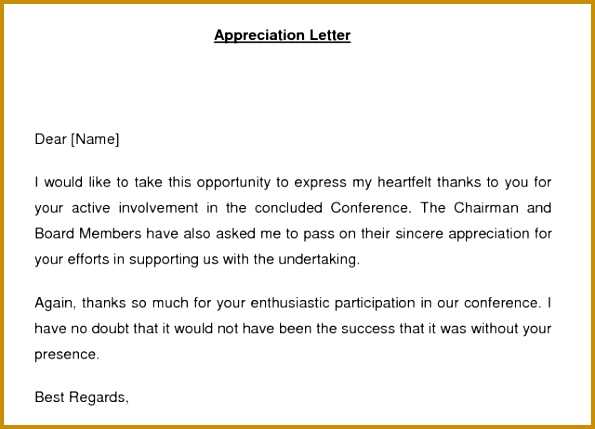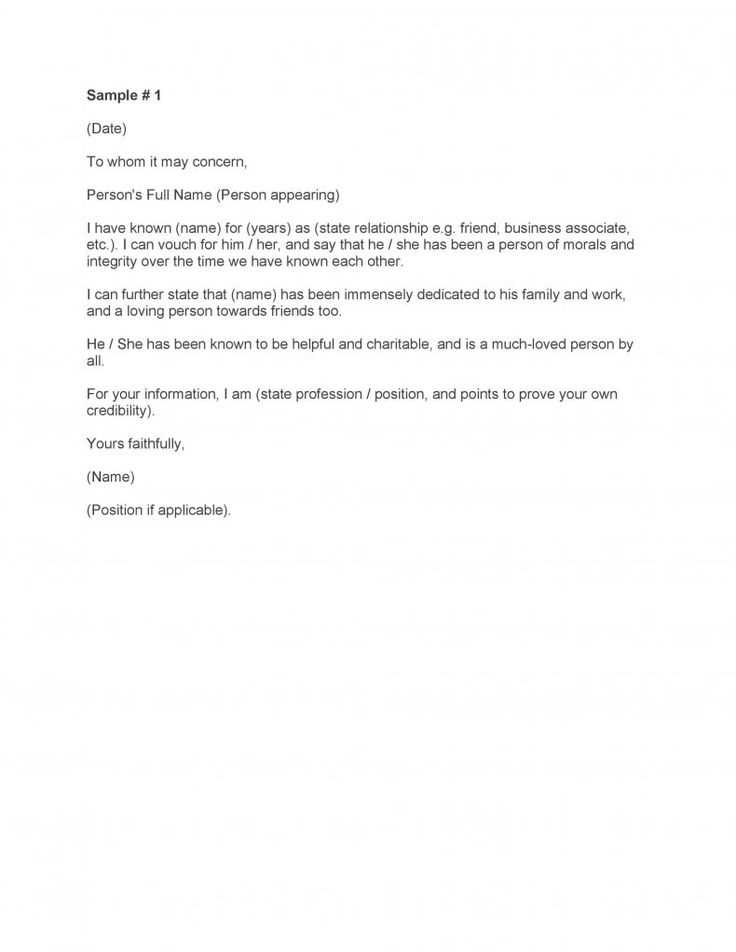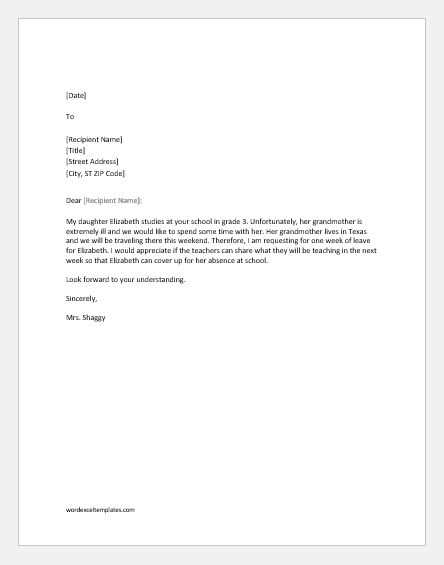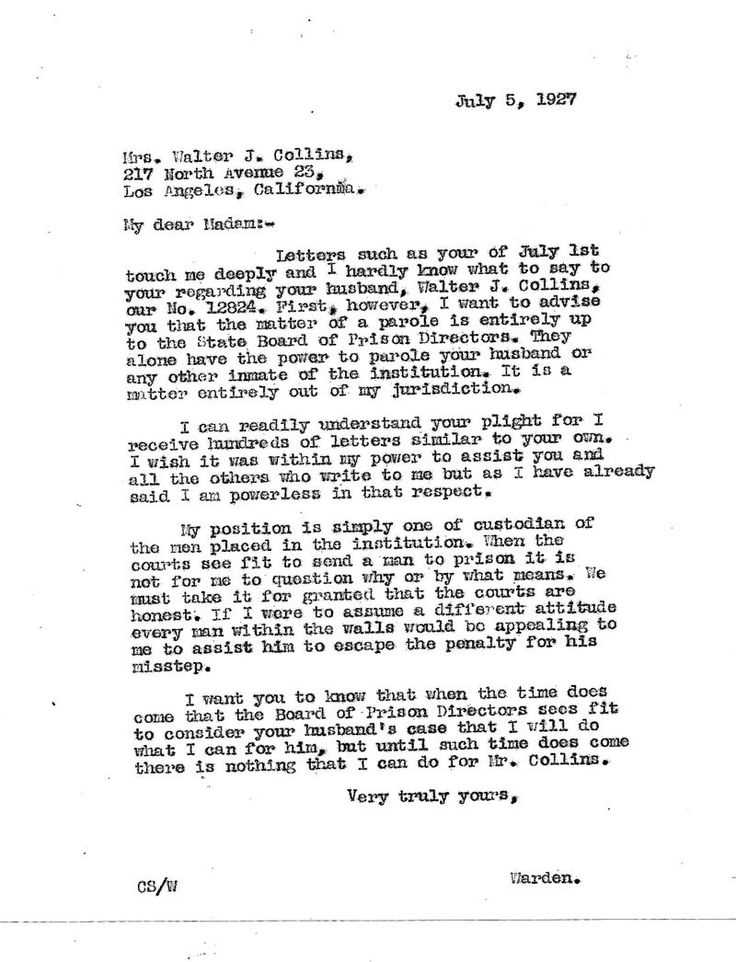Parole Board Letter Template for Successful Applications

Writing a formal appeal to request early release from incarceration requires careful consideration. The document serves as an essential tool for conveying one’s case, demonstrating growth, and justifying the reasons for reconsideration. A well-crafted message can significantly influence the outcome of the review process.
Clear and concise communication plays a crucial role in ensuring that the message is heard and taken seriously. It’s important to present a respectful tone while clearly outlining the reasons behind the request. This type of written communication should also highlight any positive changes and efforts made during the time of incarceration.
When preparing such a request, understanding the proper structure is vital. Each section must be thoughtfully organized to present the information effectively and persuasively. By following a well-established approach, individuals can increase their chances of receiving a favorable outcome from the authorities involved.
How to Write a Request for Early Release
When preparing a formal appeal for early release, it is essential to approach the task with clarity and respect. This communication serves as a means to present one’s case to the decision-making authority. The goal is to demonstrate the individual’s readiness for reintegration into society while highlighting their personal growth and efforts during their time in confinement.
The first step in writing an effective request is to start with a polite and professional tone. Address the recipient appropriately, using a formal greeting. Clearly state the purpose of the communication in the opening lines, so the reader understands the intent right away. Avoid unnecessary details or a lengthy introduction; get straight to the point.
Next, provide a concise yet compelling account of the positive changes and rehabilitation efforts made during the incarceration period. This section should focus on specific actions that showcase personal responsibility, such as participation in educational programs, vocational training, or any other relevant activities. The goal is to present evidence that supports the claim for early release.
Conclude the request by respectfully reiterating the reasons for seeking reconsideration and expressing gratitude for the time taken to review the appeal. A well-structured and thoughtful request increases the likelihood of being taken seriously and receiving a fair evaluation.
Key Elements of a Successful Request

To create an impactful appeal, it is important to incorporate several key components that can effectively convey your case. Each section should be thoughtfully constructed to provide clear evidence of personal growth, responsibility, and readiness for reintegration into society. Understanding what to include in your request can significantly increase the chances of a favorable review.
| Element | Description |
|---|---|
| Introduction | Start with a formal greeting and briefly state the purpose of the request. Be clear about your intent from the beginning. |
| Personal Progress | Highlight key achievements, including participation in educational programs, vocational training, or other rehabilitation activities that demonstrate your commitment to change. |
| Commitment to Society | Explain how your reintegration into society will be positive, and outline your plans to contribute meaningfully to your community. |
| Respect and Gratitude | Conclude with appreciation for the recipient’s time and consideration, and respectfully reiterate your request for reconsideration. |
Understanding the Early Release Process
The process of requesting early release involves a thorough review conducted by a governing entity that assesses various factors to determine eligibility. This process is structured to evaluate the individual’s progress during confinement and their readiness to reintegrate into society. Each case is considered carefully, with attention to the individual’s rehabilitation efforts, behavior, and overall impact on public safety.
During the review, decision-makers examine several key aspects, including the length of time served, the nature of the offense, and any efforts made to change one’s behavior. Positive actions such as participation in rehabilitation programs, educational achievements, and community service often play a significant role in influencing the outcome.
Ultimately, the decision is made based on a combination of factors, all aimed at determining whether early release is appropriate for the individual and whether it aligns with public safety and societal interests. Understanding this process is essential for anyone looking to submit a formal request for early release.
Tips for Crafting a Persuasive Request
When composing a formal appeal, it is crucial to focus on delivering a clear, respectful, and well-structured message. The goal is to persuade the decision-makers of your readiness for reintegration and to showcase the positive changes made during the time in confinement. A well-crafted communication can significantly influence the outcome of your request.
Start by maintaining a professional tone throughout your message. Ensure that the content is concise yet impactful, avoiding unnecessary details. Clearly state your purpose from the beginning and use supporting evidence to strengthen your case. Mention any programs or activities you’ve engaged in that demonstrate personal growth and responsibility.
Another important tip is to emphasize your commitment to following the rules and contributing positively to society upon release. Decision-makers are more likely to be persuaded if they see that you have a plan for reintegration and are prepared to contribute to your community. A well-rounded request that highlights both personal progress and future plans will help reinforce your position.
Common Mistakes to Avoid in Requests
When drafting a formal appeal, it’s important to avoid certain pitfalls that can diminish the effectiveness of your message. Mistakes in tone, structure, or content can undermine the clarity of your request and affect how it is perceived. Being aware of these common errors can help ensure your communication is professional and persuasive.
1. Lack of Clarity

One of the most common mistakes is failing to communicate the purpose clearly. Keep your message straightforward and to the point.
- Start by stating the main goal of your request in the first few lines.
- Avoid unnecessary details or vague statements that could distract from the central message.
2. Overly Emotional Language

While it’s important to express sincerity, an overly emotional tone can undermine the professionalism of the appeal. Stick to a respectful and measured approach.
- Avoid pleading or using language that sounds desperate.
- Focus on factual evidence and constructive reasoning to support your request.
Legal Considerations in Early Release Requests
When seeking early release, it’s important to be aware of the legal framework that governs such decisions. These requests are not only based on personal progress and rehabilitation but also on strict legal guidelines that determine eligibility. Understanding these legal aspects is crucial to crafting a request that aligns with the necessary criteria.
One of the most significant factors is ensuring that the request complies with applicable laws and regulations. Timing plays a crucial role, as requests are often only considered after a certain portion of the sentence has been served. Additionally, the nature of the offense and any prior violations must be taken into account, as these can heavily influence the decision-making process.
Moreover, applicants should be mindful of the evidence required to support their appeal. Demonstrating progress through certificates, program completions, or other tangible achievements is important. However, it is equally important to avoid misrepresenting information, as false statements can result in legal consequences that harm the chance of a favorable outcome.